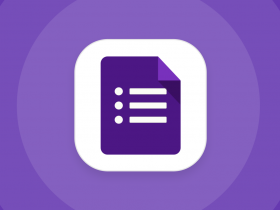
How to improve your form completion rates
Are you having issues turning interested parties into paying customers? Even leading brands in the booking industry have difficulty with their conversion rates; airlines have been able to improve their typical conversion rates of 10% with reordering flows, however it can be expensive to optimise areas like this. Banks find that loan application form completion rates can vary between 1% and 10%. Is this all down to window shopping, or is something else going on?
The travel industry has the highest level of abandoned forms (81%), which is followed by non-profits (77.9%), finance (75.7%), and retail (75.8%) (source, SalesCycle). One of the biggest challenges in online transactions is developing an effective booking flow - the journey that converts an online visitor into a paying customer. 63% of businesses say that their biggest challenge is lead generation. 74% of all companies use web forms for lead generation and, of this group, 49.7% state that it is their most effective tool.
Form completion is a very real business challenge. Here are some ways you can tackle it.
How to streamline your booking flow
81% of people who begin a form will abandon it and fail to return. There are a number of reasons for this, including safety and a difficult booking flow. More than 67% of site visitors will not come back to fill out a form they have started if they meet with any complications. This is why Powform’s rapid testing is so helpful, because only 20% of customers will follow up with a company about these issues.
'Fail fast' is a concept in which an app is developed quickly to see where it falls short and where changes can be implemented. So we recommend that you develop and test your form quickly. Of course, your online visitors won't want to wait for the most suitable booking flow, so you'll want to test components on the go and with our drag and drop builder you can correct each phase of the sales cycle in seconds.
74% of adults online use social media sites, which is a mountain of potential. A slick branded form can be integrated with your social media channels and website so your customers are taken straight to the beginning of the booking flow. Date and time, as well as contact details, can be taken in seconds. Instead of having to navigate your site to find what they need, customers get to where they need to be in one click. The link can be embedded in your bio or shared as part of your content marketing strategies. The link to your form can also be used as the 'final URL' in a Google Ads campaign.
Build trust with strong branding on your forms
Consistency is a key element in building trust with consumers, and strong branding will help you with that. Did you know that colour alone increases brand recognition by up to 80%?! So the look and feel of your forms will be an important piece of the booking flow - staying on brand from beginning to end of the buying process is essential. Remember to apply your logo, your colour palette, and your brand voice (the tone and style you use for your copy) so your user feels at home.
A consumer's biggest concern when filling out an online form is safety (the length of a form is a close second). Demonstrate to your customers that your form is safe (Powform offers safety and protects your data and your customer's data) to continue the trust you have already built with them elsewhere. Remember that it's much easier, and cheaper, to keep an existing customer than acquire a new one. It is important not to alienate your existing customer base when searching for new customers.
Monitor form completion rates and make improvements
In Powform, the owner of the app is notified when a form is completed, or a sale is made. These notifications can be recorded and over time can be used as data to help optimise completion rates. An investigation conducted by HubSpot in 2019 shows the average length of a web form was 5 form fields and the optimal number for conversion rates is just below this. QuickSprout advocates for not more than 3 form fields to help reduce form abandonment.
Conveying a sense of urgency (through countdowns or deadlines) is a common marketing tactic and could be used to increase your completion rates. This is something you see quite a lot in recruitment. Over 60% of job applicants will not finish the form if the application is too complex (although 'complex' means different things to different people). Then again, over 50% of employers say they make their applications complex on purpose to test job applicants' commitment. So in certain cases you'll be aiming for a lower conversion rate but higher quality submissions. Before you start monitoring your completion rates, decide what you are trying to achieve and what success looks like for you.
Another way to improve completion rates is to personalise the experience. Create a form, assign a user to it, and they will receive a personalised email with a unique link to the form. Our research shows this is the most effective for high completion: one email to establish contact and the second to build the relationship with a personalised link. When you already know something about a person, you can make the interaction and experience fit their requirements. Only 44% of businesses send an email receipt to their customers, even fewer send just a confirmation (38%), while promotional offers are the lowest (22%) (source: The Manifest). As you can see, the potential to build on your relationship marketing is there if you put in the effort.
According to HubSpot’s research, personalised calls to action can achieve more than double the conversions rate of a generic call to action phrase ("buy now" "click here to find out more" "claim your discount"). This two-way channel of communication is useful for a number of reasons, it also helps with re-engagement as 19% of people will return to complete a form if a business reaches out to them by email or by phone. 30% of users will return to the form if you offer some form of reward for filling it out. A reward for sign-up or general form completion is only limited by your own imagination and understanding of your customers' needs.
Use sections to allow forms to be completed in stages
A complex booking flow can be divided up into individual sections and a personal link issued so that a user can complete each section in their own time. You can then re-engage with your client or customer if too much time has passed without them progressing. You can just remind them of the deadline or touch base and see if they have any questions or need any help. Someone might be stuck for a technical reason, and this will help you find out and fix the issue before it becomes a bottleneck.
Breaking your form up into stages is useful in lots of ways. Imagine if a customer has to provide proof of identity or a proof of address to complete a form application but is at work and doesn't have those with them. By allowing them to stop the form, they won't lose the progress they have already made and won't have to enter information again. Or they might start the form on their laptop and then complete it on their mobile phone. The peak time for form completion is 9 pm, as many people prefer to complete sign-up or the signing of official documents in their own homes.
Try building your own online form on Powform
We hope we have motivated you to start designing a form that gets the best completion rates in the world! Before you go, we have two more statistics that every top-class form builder should know. 74% of website users will return to the website if it is mobile friendly, so make sure that whatever platform you use will work on every device. Also, 90% of users will not return to an online service if it is slow, so make sure your forms are fast to load no matter how good, or bad, the user's connection is. Ready to get going? Try Powform for free today!
Related Articles

How to use an online form to run a survey

Google Forms versus Powform's no-code solutions

How to use online forms to conduct research
Highly Configurable - No Coding
Build professional and fast branded e-commerce and customer data collection web apps, no coding experience needed. Scalable solutions that can be built and integrated into your business in minutes.
Powform enables you to create branded, interactive, multi-feature apps for mobile and desktop browsers, including all the smart features you need to collect customer data and payments. With the addition of conditional logic you can provide a more tailored experience for your customers.
Our managed secure database allows you to store and analyse all submitted web app data.
Want to store all app data in house?
App submissions can be directed to other business systems via secure authenticated api services.
Contact us today to discuss your custom branded no-code web apps requirements.

